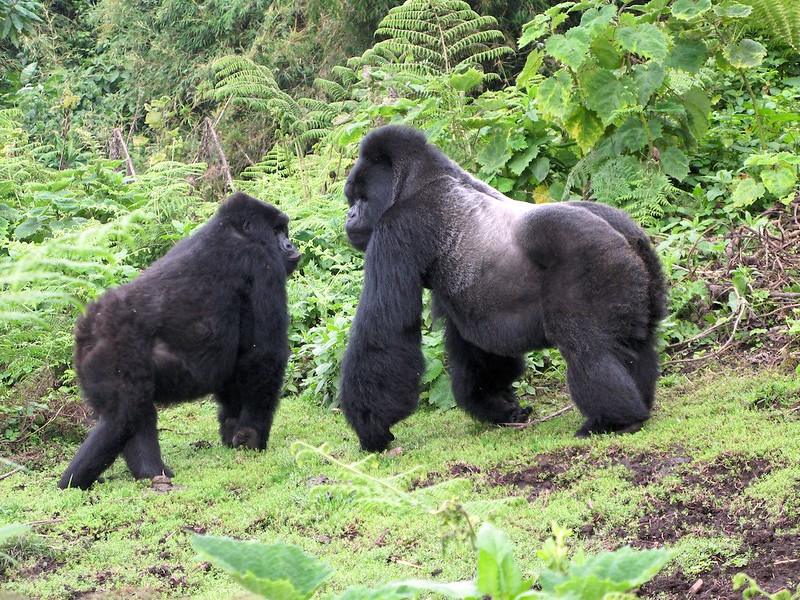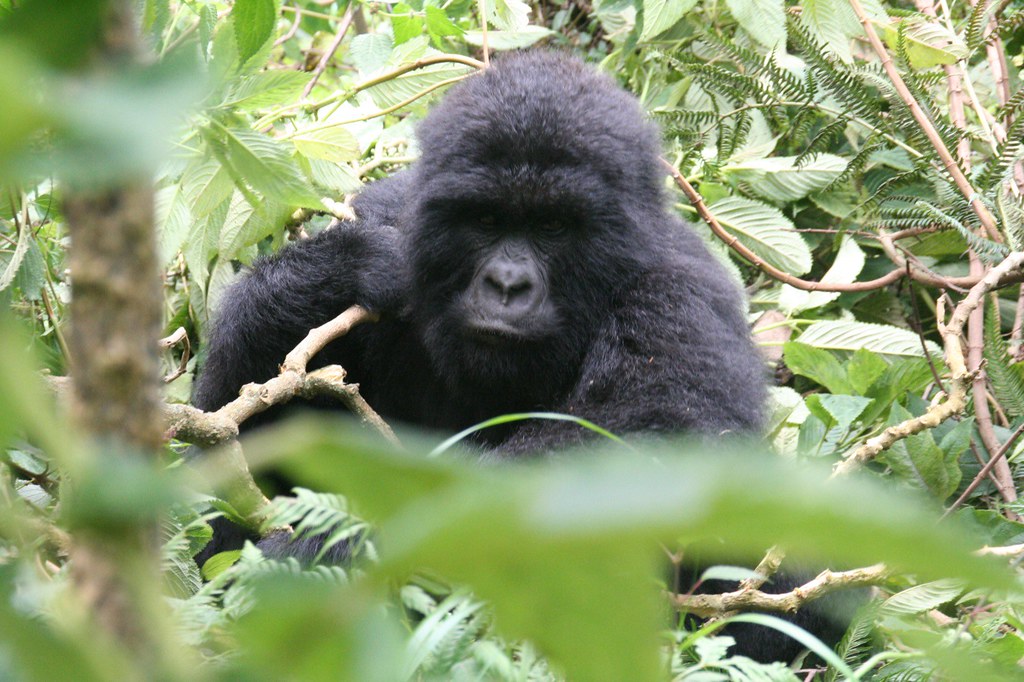Is gorilla trekking in Africa Dangerous
Is gorilla trekking in Africa Dangerous, Indeed, gorilla trekking is safe for both participants and the magnificent animals, contingent upon specific precautions being observed.
Given that male silverbacks can weigh up to 400 pounds and tower nearly 6 feet tall, it is reasonable to feel vulnerable when encountering gorillas in their natural habitat. However, the truth is that these charismatic creatures are tranquil – their benign disposition permits us to see them closely in their natural environment (however, it is crucial to acknowledge that they are wild animals and their privacy must be honored).

They are likewise at risk of extinction. The obliteration of traditional agricultural practices and rampant poaching has drastically reduced their population—fewer than 1,000 mountain gorillas remain in the wild.
Sustainable tourism contributes to counteract this negative trend. Observing these wonderful animals in their native habitat is both a transformative experience and a contribution to their protection.
Monitors and Instructors
The safety of anyone seeking to observe mountain gorillas is entrusted to skilled trackers and guides. Due to the perilous status of the mountain gorilla, it is a legal obligation to be accompanied by a guide during treks. They guarantee the safety of both the tourist and the gorilla during an interaction, while enhancing the experience with their profound understanding of the troop.
The safety of all participants is further enhanced by stringent regulations governing visits to the mountain gorillas. Each squad is allocated eight permits daily to minimize interruption. Groups are limited to eight individuals, and visitors may spend a maximum of one hour in the presence of the gorillas—sufficient time to gain insight into the life of these captivating beings.
wild male gorilla
Guidelines for Conducting Oneself in the Presence of Gorillas
While your guide will consistently provide assistance near the gorillas, it is advantageous to familiarize yourself with appropriate behavior before entering the verdant mountain forests.
Tip 1: When gazing into a gorilla’s eyes, briefly cherish the encounter, then promptly divert your attention and look downward. This indicates to the gorilla that you pose no threat, allowing everyone to relax.
Recommendation 2: Maintain a safe distance of seven meters (about 23 feet) from the gorillas. This inhibits the transmission of human diseases to the gorillas. If a gorilla approaches you, remain stationary and let it pass. If you find yourself in the precise location desired by a gorilla, simply provide the necessary room and let it proceed as it wishes. Should the gorilla approach and subsequently sit, gradually retreat to reestablish a seven-meter space. Rest assured, if you are uncertain about the appropriate course of action, your advisors will monitor your progress and provide instructions on the optimal method of movement.

Tip 3: If you must cough, ensure you do it into your elbow. This aids in preventing the gorillas from contracting any ailments you may possess. If you are unwell before the walk, it is advisable to postpone until you have recovered.
Tip 4: Upon encountering a troop in a mountain forest clearing, endeavor to remain silent and proceed cautiously, in accordance with your guide’s recommendations. Gorillas are gentle giants; but they may become startled and feel threatened if approached too swiftly or closely. Upon nearing the gorillas, you may observe your guide emitting a belching sound; this behavior is not indicative of poor etiquette, but rather a kind of gorilla communication to convey a lack of threat.
The Summary
Gorilla trekking is exceptionally safe; with the guidance of a professional and a suitable mindset, your encounter with the mountain gorillas will be both secure and profound. By exhibiting respectful behavior towards animals and the environment, you will experience an unforgettable encounter with one of the world’s rarest apes.
